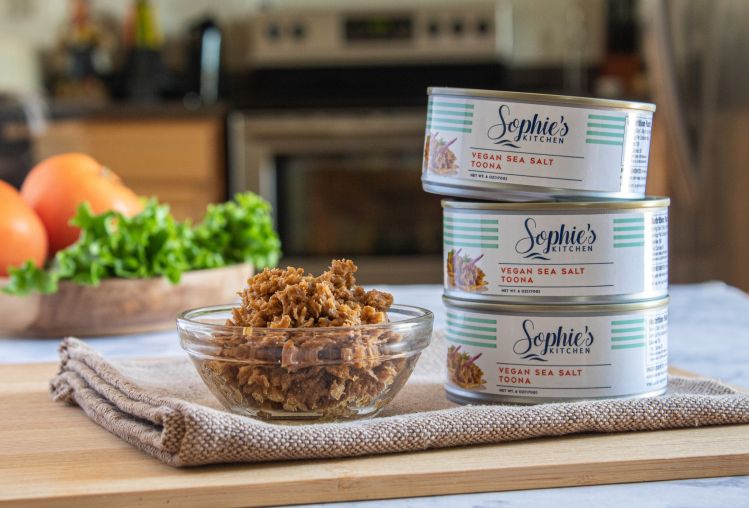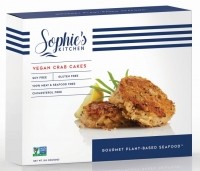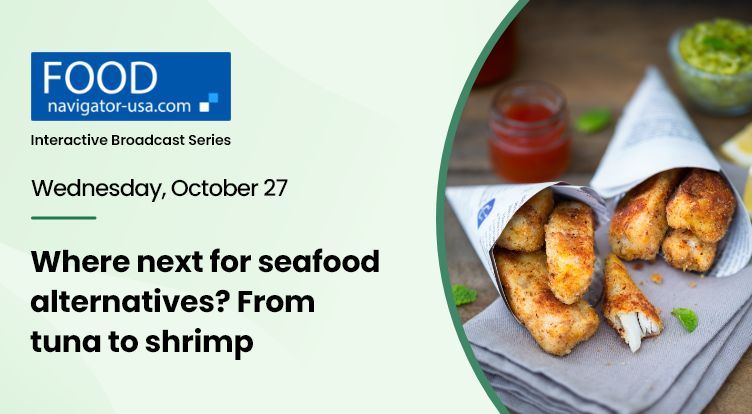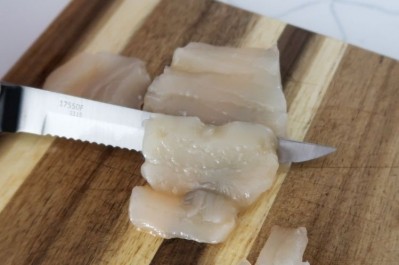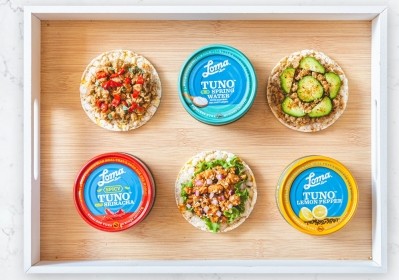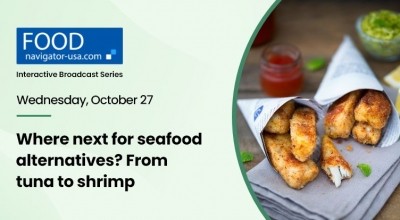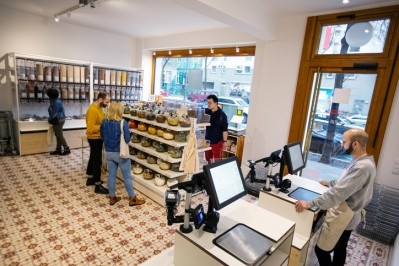'Our priority is innovation...' Sophie’s Kitchen raises $5.6m to expand plant-based seafood category
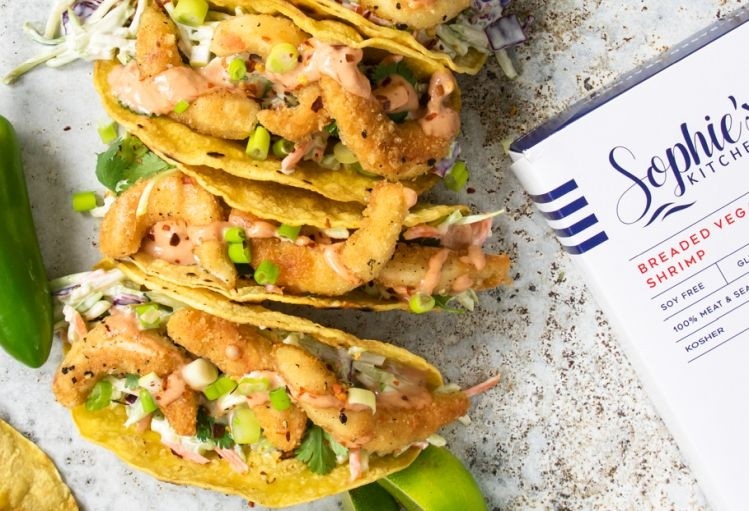
The firm, which works with co-packers in the US and Taiwan, is now in the frozen aisle in chains including Walmart, Wegmans, and Sprouts, proof that plant-based seafood has the potential to move into the mainstream, CEO Dr Miles Woodruff told FoodNavigator-USA.
“Shrimp and crab cakes took off this year, and we have also seen retailers shift their plant-based expansion in general, doubling or even tripling the products on the shelves and exploring plant-based marketing."
Going forward, he said, "Our priority is innovation - innovation in our research and development, technology, partnerships, and portfolio of products leading into 2022.
"Additionally, we are forming domestic and international relationships that will disrupt the supply chain in the plant-based category,” said Woodruff, who uses pea (and sometimes rice) as a primary protein source but is exploring new options including microalgae protein.
Seaspiracy...
Asked whether consumers expect plant-based seafood to be fortified with the long-chain omega 3 fatty acids (EPA and DHA) that are found in seafood, he said, "Yes, absolutely, our products are moving in that direction, but it is vital that we ensure they can withstand the cooking process and maintain their nutrient profiles before we included them."
While the plant-based seafood industry is tiny compared with the plant-based meat segment, the consumer drivers are there, claimed Woodruff, who joined Sophie’s Kitchen in summer 2019 as founder Eugene Wang headed to Singapore to build a microalgae food protein business.
"Popular documentaries like Seaspiracy help shine a light on the broad environmental impact associated with the consumption of oceanic wildlife, whereas before the attention of the sustainability movement was more focused on land-based animals."
COVID-19: Remote working, new customers, supply chain challenges
As for COVID-19, he said, "It made international supply chains complicated...[but] positives came out of the challenges over the past year and a half, including the opportunity to access talent pools worldwide, giving us the chance to bring our research and development in-house and create a team of the best in the business.
"This wouldn’t have been the case if we tried to hire locally during the pandemic with travel restrictions and didn’t embrace the remote culture.
"Additionally, consumers decided to try alternative sources due to the lack of access to traditional proteins during the pandemic. This demand opened Sophie’s Kitchen up to customers that wouldn’t have tried plant-based foods before."
Plant-based seafood: Niche market or huge untapped opportunity?
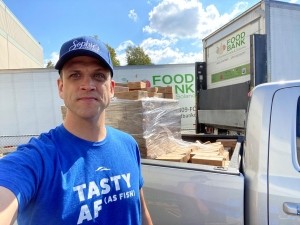
While plant-based seafood accounted for just $12m in US retail sales in measured channels in 2020 according to the Good Food Institute, many players believe seafood represents a significant untapped opportunity in a sector dominated by beef, pork and chicken alternatives, said the GFI in a recent report noting that there are now at least 85 players (that we know of) worldwide making seafood from plants, from microbes through fermentation, and from animal cells.
Good Catch recently opened a new plant in Ohio and entered into a joint venture with seafood company Bumble Bee Food; New Wave Foods has secured investment from Tyson Foods; Atlantic Natural Foods is seeing solid growth in its TUNO canned tuna alternatives; Nestlé has entered the market in Europe with ‘Vuna,’ a tuna alternative; and Impossible Foods has plant-based seafood products in the pipeline.
Birds Eye’s Green Cuisine, added plant-based fish fingers in the UK; Seara Alimentos, a subsidiary of the Brazilian meat company JBS, has launched a line of plant-based products including fish sticks and cod in Brazil; Cargill has introduced a plant-based scallop co-branded with Japan-based c-store chain Lawson; Thai seafood firm Thai Union plans to introduce plant-based shrimp by the end of this year; and the Van Cleve Seafood Company has a plant-based spinoff called The Plant Based Seafood Co (previously Wild Skinny Clean).
While fish is considered to be healthier than, say, burgers and sausages, the laundry list of problems linked to seafood - from overfishing to contaminants, pollution, microplastics, fraud, mislabeling, illegal labor practices, habitat damage, and bycatch – is driving interest in greener, cleaner, and kinder alternatives, said the GFI.
Merchandising plant-based seafood
Right now, almost all plant-based seafood is sold in the frozen food aisle, noted the GFI, which said a move into other parts of the store could give the category more visibility.
“There is little plant-based seafood in the refrigerated seafood section or at the seafood counter, where consumers are shopping for conventional seafood.
“Moving beyond frozen and shelf-stable products and getting out of the frozen veggie section will increase the visibility of plant-based seafood and accelerate the growth of the category by bringing in new consumers in the same way that placing plant-based milk and plant-based meat in the dairy and meat aisles have.”
Formulating plant-based seafood
According to a white paper from flavors & fragrances giant Givaudan in collaboration with the University of California, Berkeley, the top choice for manufacturers in the plant-based fish space is soy, due to its high nutritional content, functional flexibility, established supply and consequent low cost, and favorable fibrous structure that performs well in the texturizing process.
Pea is the next most popular choice, offering an allergen-friendly alternative although it has a more challenging taste profile and higher price tag.
Wheat is also a popular protein source, with a low cost, clean taste, and good functionality but with lower nutritional content and issues with allergens.
Other protein choices include chickpea, lentil, flaxseed, faba and navy bean. Vegetables such as jackfruit, carrot, tomato and eggplant are being used in innovative ways to successfully mimic textural properties in alternatives for sushi and salmon or tuna slices. Seaweed and algae are another option. The gel-like properties of algae also closely match the texture of shrimp, while konjiac - when thickened and mixed with gum - also closely mimics the texture of shrimp and can also be applied to lobster, crab, prawn and calamari alternatives.
Texture and plant-based seafood
Mimicking the texture of fish is easier to achieve through a wet texturized vegetable protein (TVP) than dry. While wet TVP is more difficult to shape than dry, flavors can be incorporated into it throughout the whole process, notes Givaudan.
“TVP is well suited to processed fish products such as breaded fillets and fish fingers, but does not recreate the flaky texture of whole fish. This is still the biggest challenge for fish alternatives and has yet to be perfected.”
Interested in seafood alternatives?
Join Chad Sarno at Good Catch, Michele Wolf at New Wave Foods, Anne Palermo at Aqua Cultured Foods, and David Benzanquen at Mission Plant in our webinar, Where next for seafood alternatives? (part three of FoodNavigator-USA’s October broadcast series), to explore where the market is going next.
